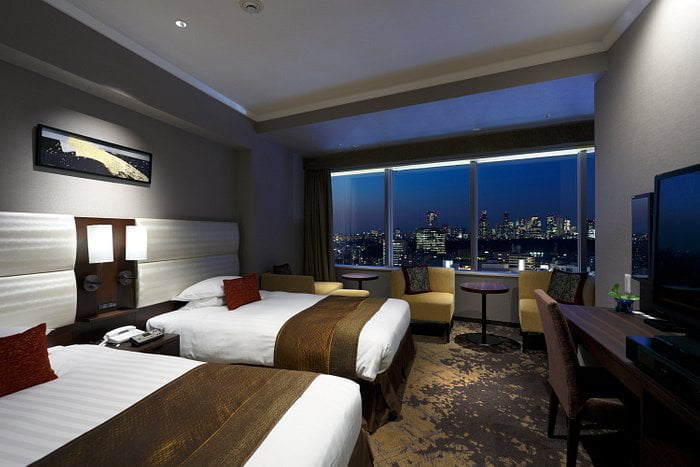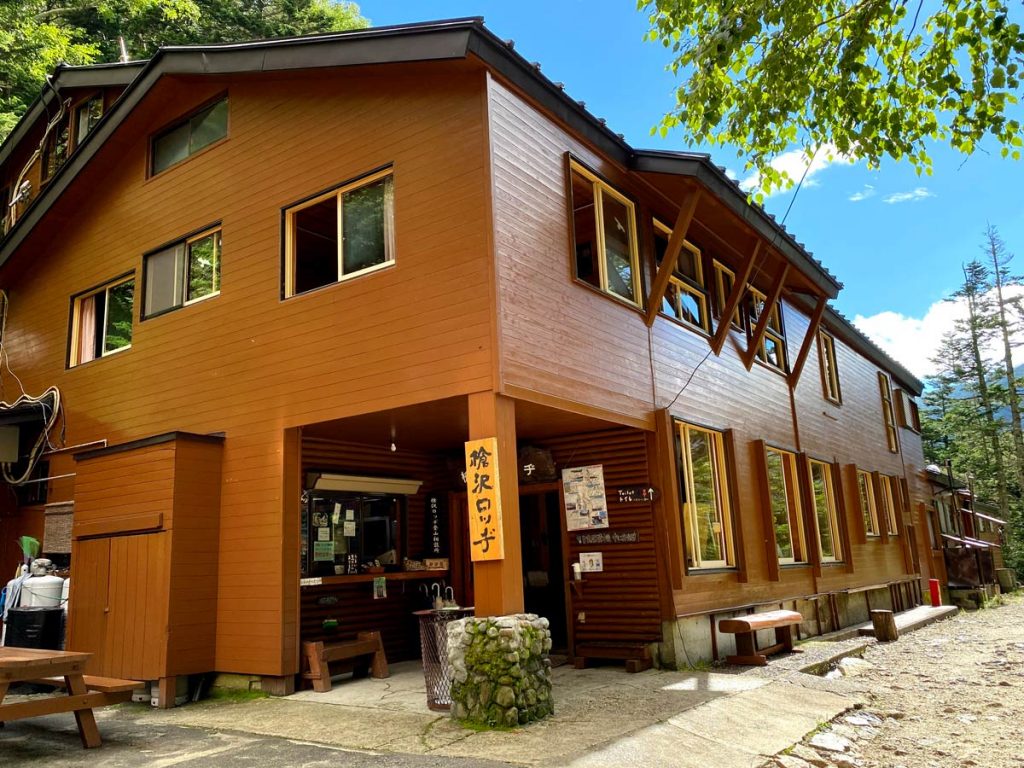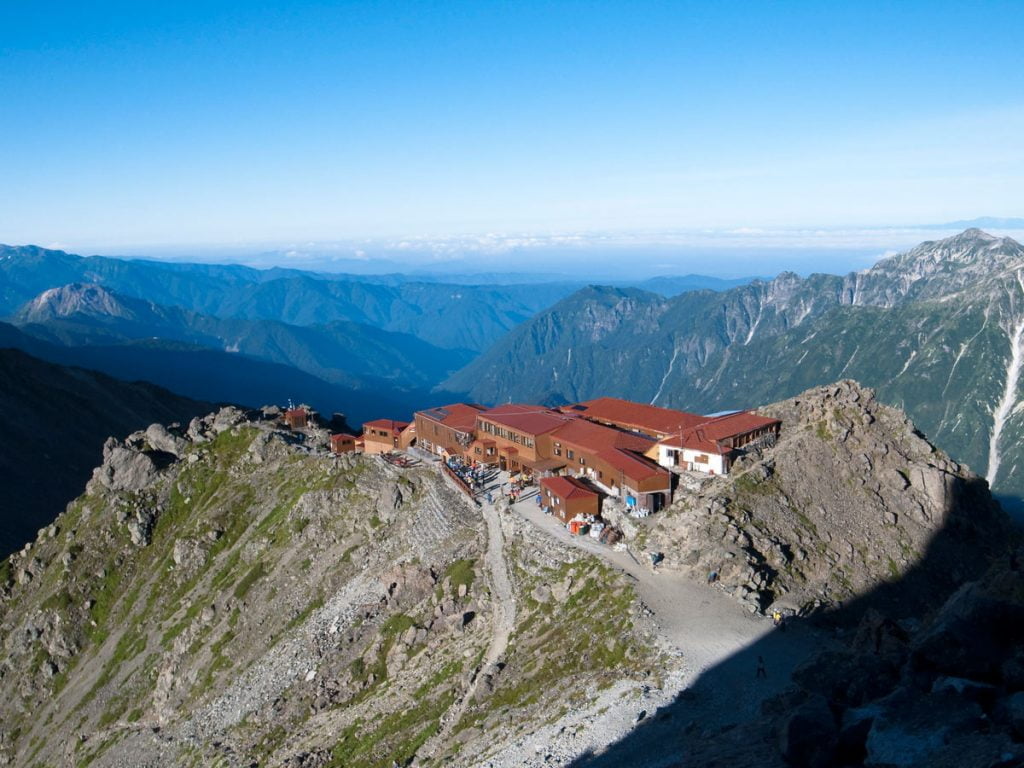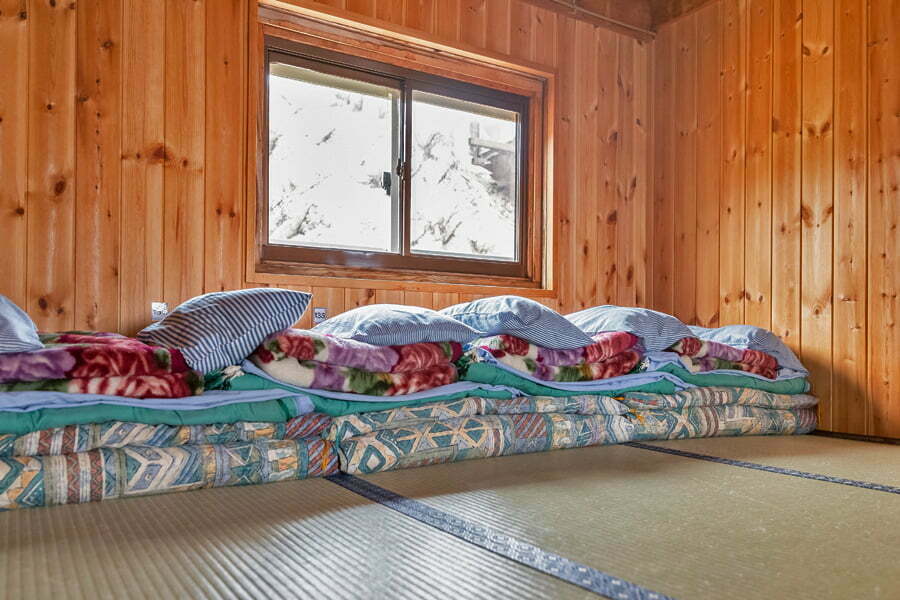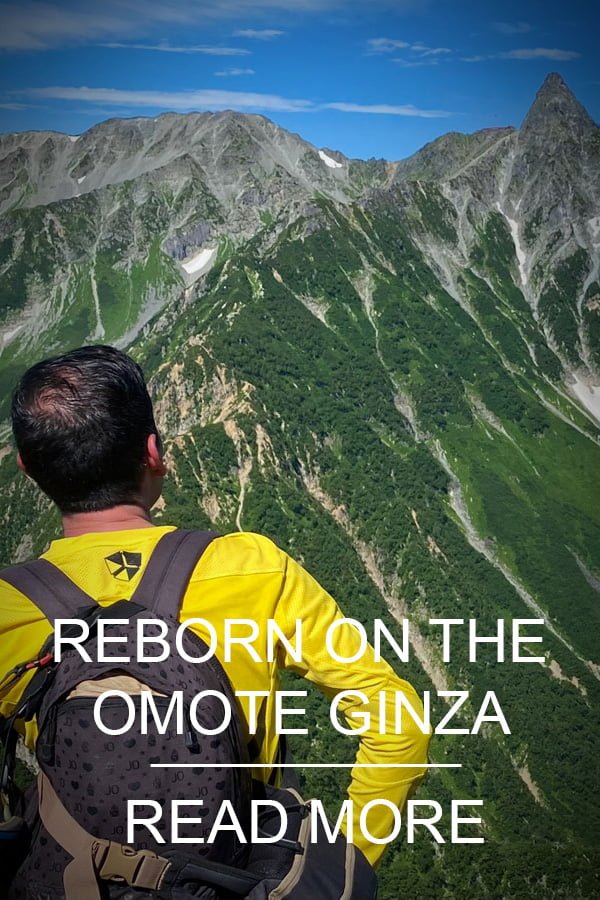It’s back to one of the largest and most exciting cities in the world, Tokyo. We will have a farewell dinner with our team and maybe head out for a nightcap in Shibuya. (B)
Japanese Alps
Omote Ginza Trail
11 Days 5650 ex Tokyo
Accommodation
2 Nights Ryokan
4 Nights Mountain Hut
4 Nights Hotel

Transportation
Mostly by foot.
Train & vehicle transfers

Included Meals
10 Breakfasts
4 Lunches
8 Dinners
Standing on the summit of Mt Tsubakuro, one could be fooled into thinking they were atop a mountain in the European Alps. Rugged mountain peaks line up, one after the other across the landscape. Mountain huts dot the ridgelines and small colourful dots (hikers), scramble along trails. But this is not Europe, but the Omote Ginza trail in the Japanese Alps.
Think of Japan and we often think of delicious food, megacities, ancient temples, polite people, cherry blossoms and Mt Fuji.
Of course, Japan is so much more than this and we plan to take you to a part of Japan few ever imagine existed. A place of high rugged mountains, mountain huts and traditional ryokan, of pristine rivers and forests and of course polite people and delicious food.
So get ready for some incredible hiking, slipper and gown wearing in a ryokan, one or two traditional Japanese baths and a trek to Japan’s highest peak, Mt Fuji.
“Boasting some of Japan’s most magnificent peaks and dramatic scenery, the northern Japan Alps (北アルプス) are truly spectacular, with stunning 3000m peaks accessible even to amateur hikers”.
Lonely Planet
Our trek whisks you directly to these mountains from Tokyo. From Nakabusa, we start our 4-day hike across the ridges of the Japanese Alps, via Mt Tsubakuro, Mt Otensho and the ultimate summit, Mt Yarigatake standing at 3180 meters.
From Yarigatake we will make the long descent down to the beautiful Kamikochi.
But our adventure is not complete. We must take on the iconic and tallest mountain in all of Japan, Mt Fuji.
Standing at over 3700 meters, Mt Fuji dominates the landscape around Kawaguchiko. While many hike up and back in an exhausting day, we will hike to Mt Fuji’s summit and spend a night in a mountain hut, giving us a chance to watch the sun set and rise over Japan. A truly amazing experience.
Our 10 day journey ends in Tokyo, where you are free to return home or head off to see some of Japan’s other great sites.
Around 70% of Japan is forested and or mountainous making it unsuitable for farming and living, but perfect for hiking and adventure.
Note: If you have a serious fear of heights, the kind that makes you freeze and incapable of moving, then this trek is NOT for you. We use a series of ladders in some sections and a supporting chain in others. They are very secure. If you have a healthy respect for heights then this trip is good for you.
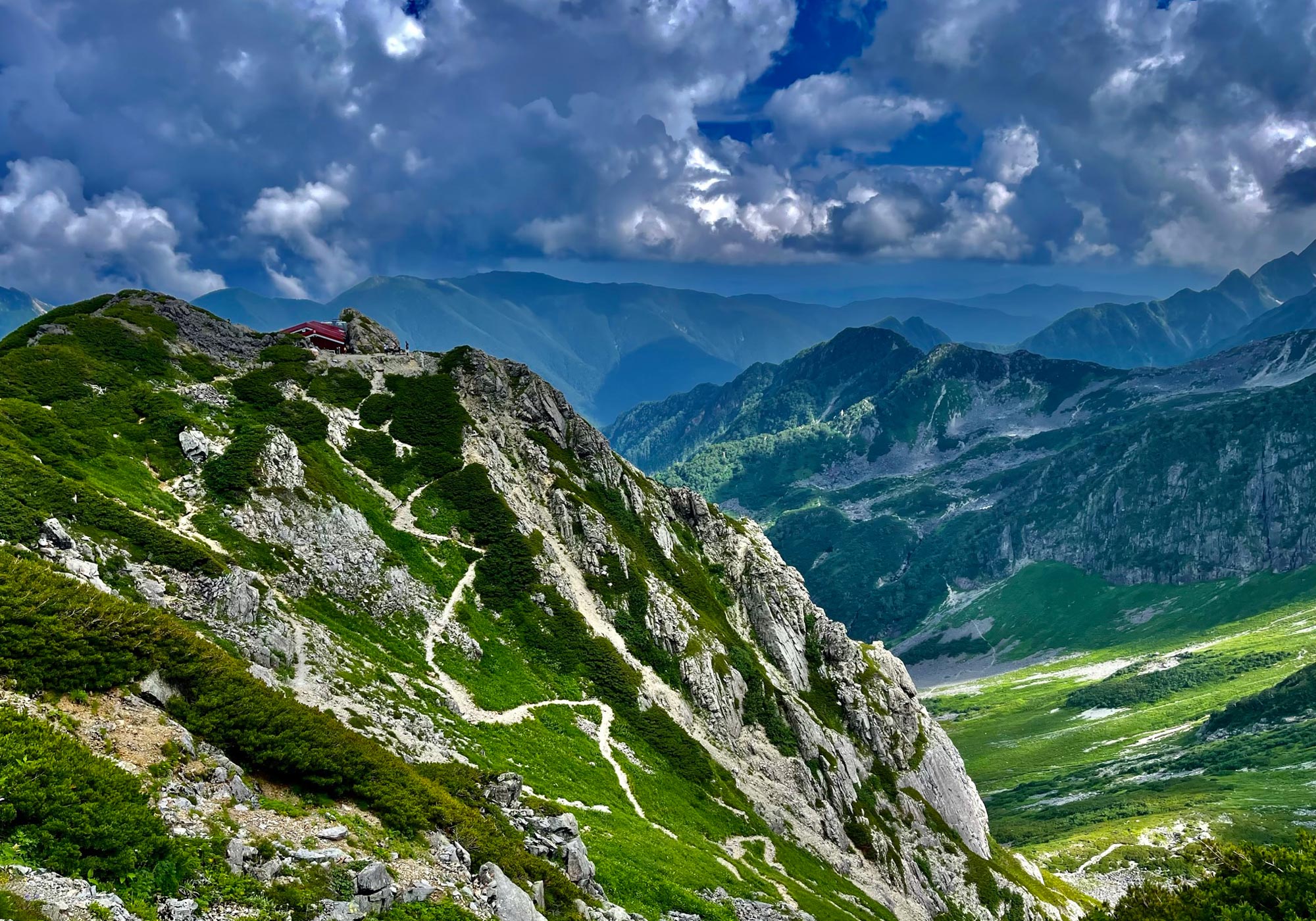
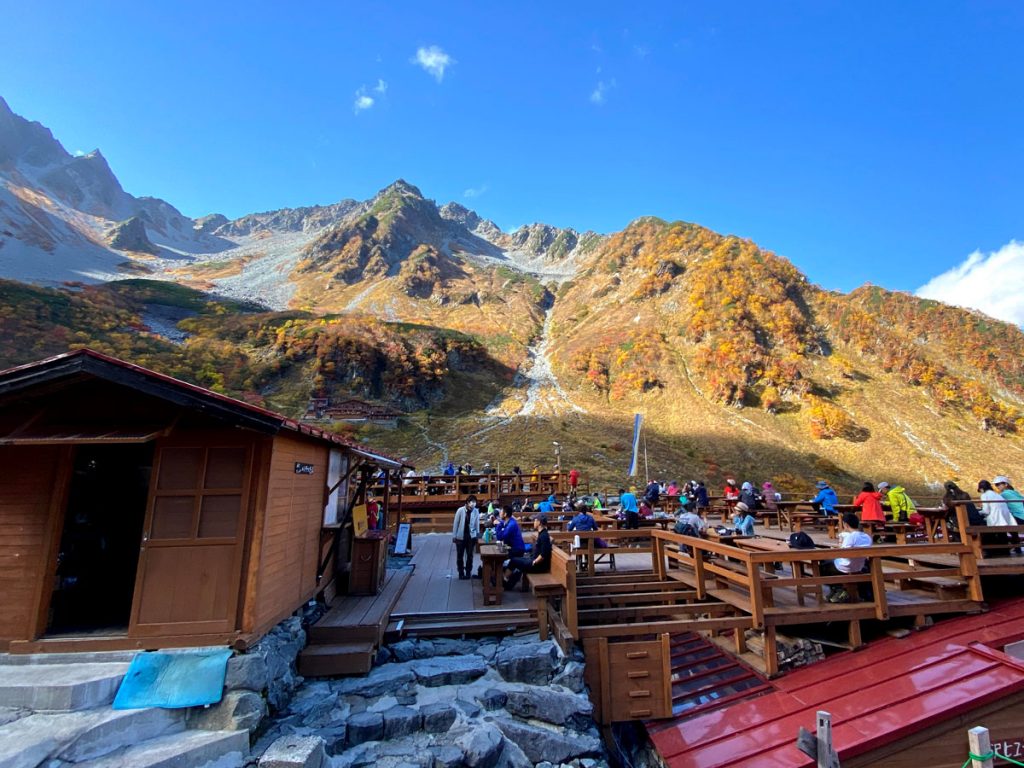
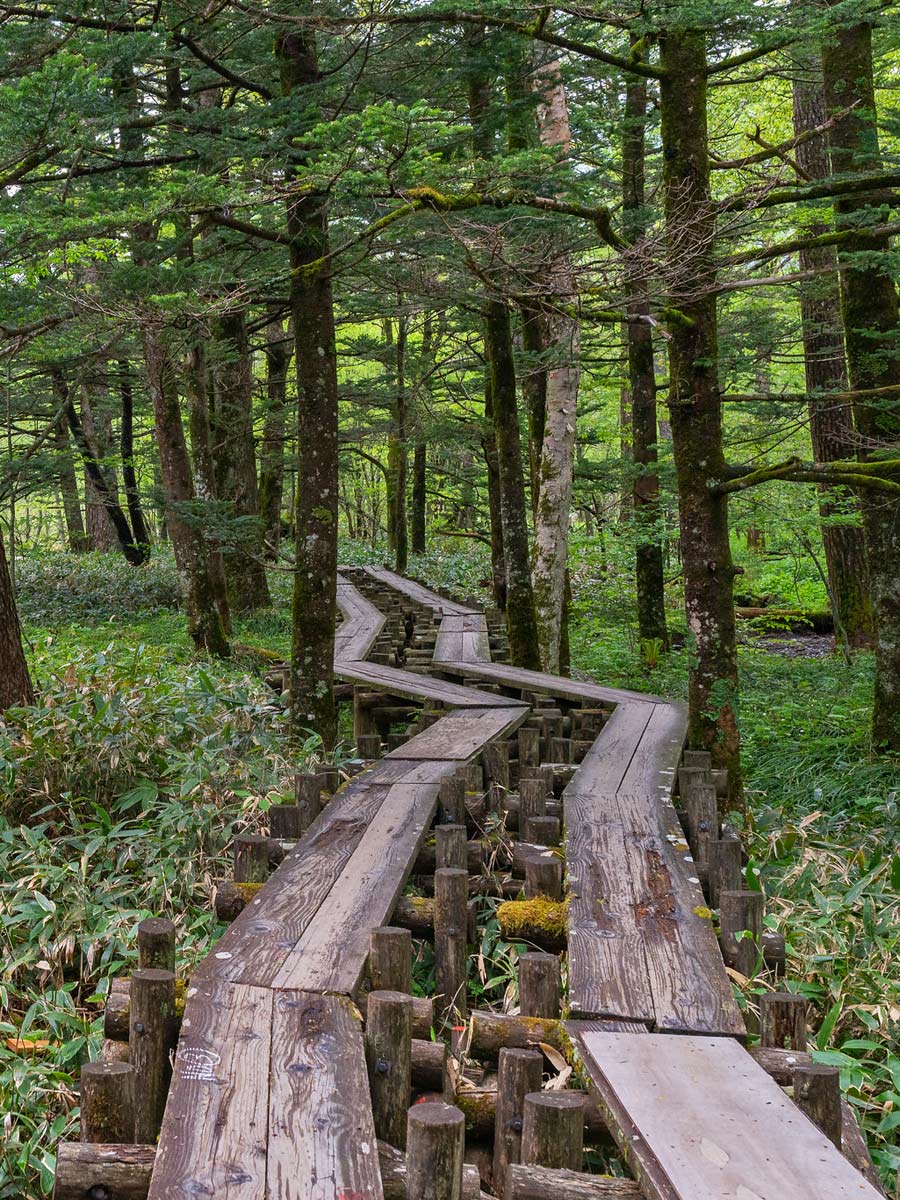
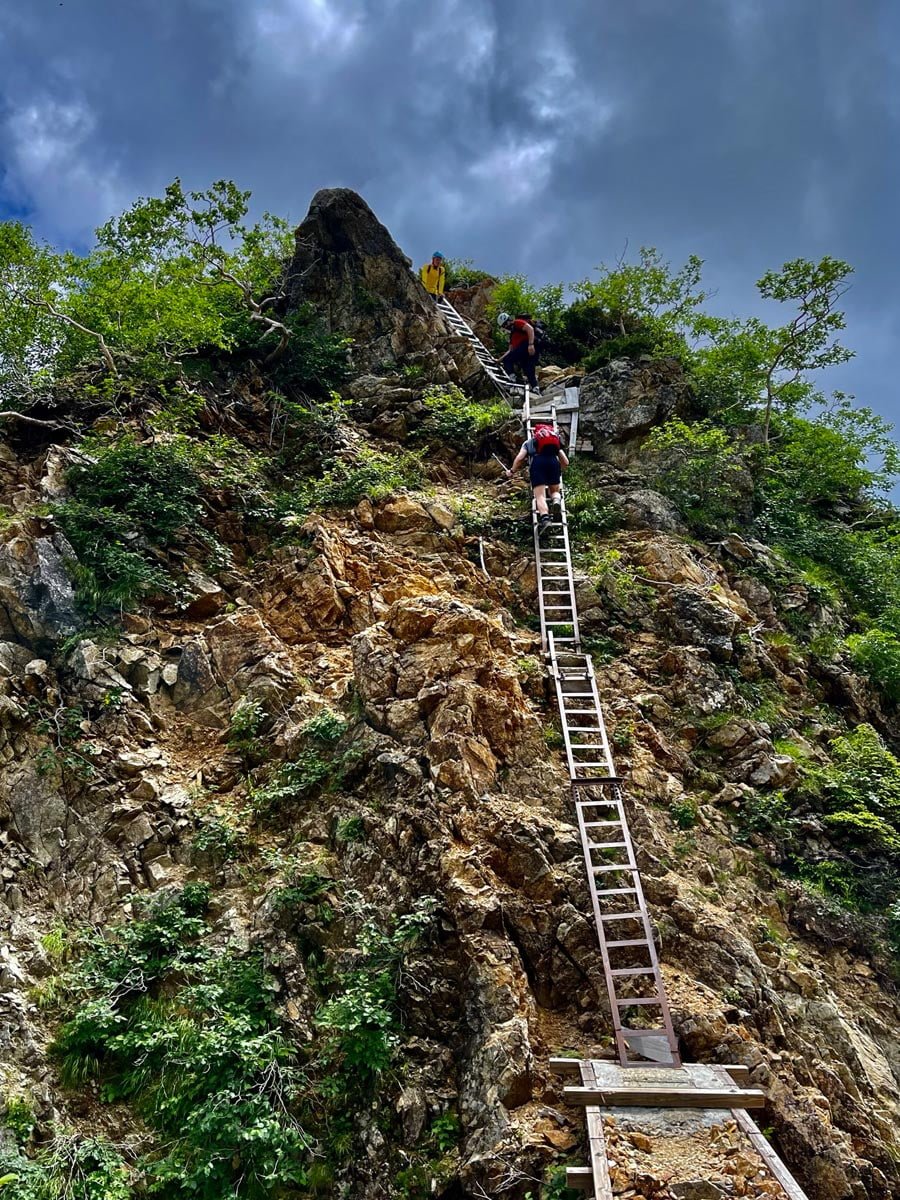
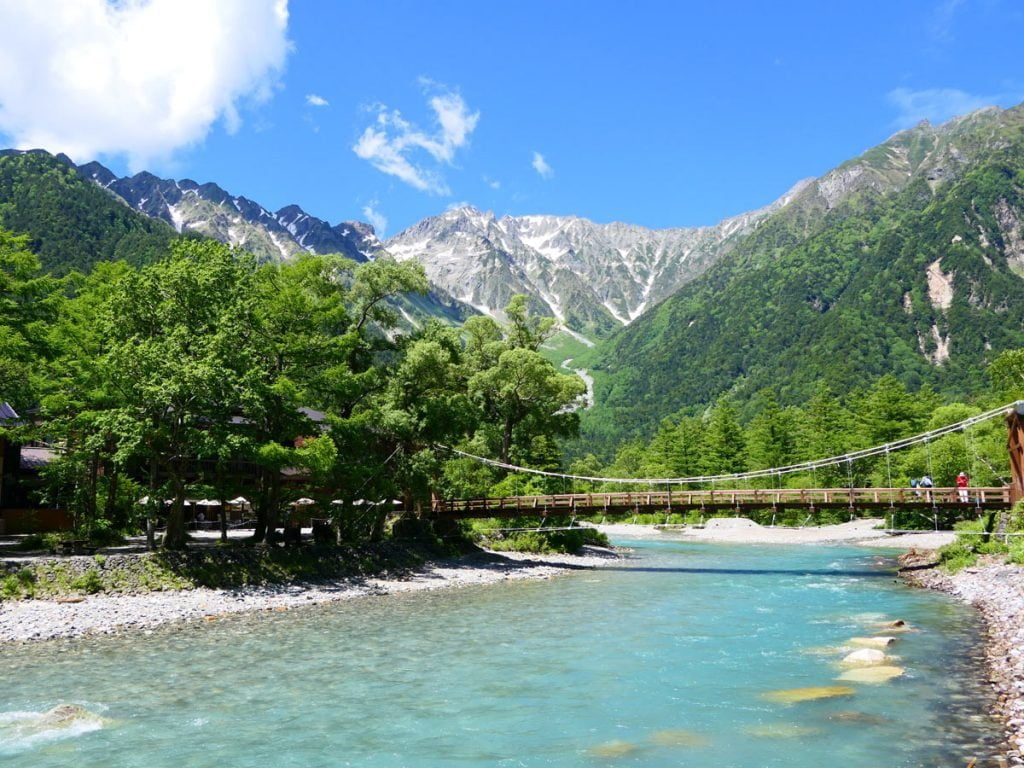
The Journey
You will arrive in Tokyo. From the airport, you will find your own way to Asakusa, which is where our hotel is. This evening we will have a briefing from our Guide.
We want to get you into the mountains as soon as possible, plenty of time for cities later, so we head straight for Nakabusa at the base of the Alps for an overnight stay in our first ryokan. Our guide will explain what will be happening over the next few days, what to pack and what to leave behind for your luggage transfer for Kamikochi. (B,D)
We are ready to go on our first day of trekking in the Japanese Alps. We will start at an elevation of 1450 meters and hike straight up to Enzanso which is at an elevation of 2763 meters. The first few hours is the most difficult through the forest until we reach the oasis of Kassen goya mountain hut and their delicious watermelons. From there is a more gentle with a few short sections using chains for assistance (don’t worry these are not technical at all). That’s a big elevation gain with an approximate hiking time of 4 hours to the mountain hut and additional 30 minutes to the summit of Mt Tsubakuro. (B,L,D)
Today we will hike the same distance as on our first day (approximately 9 kilometers) without the massive ascent. There is time today to take in the glory of the Japanese Alps. The ridge meanders south toward Mt Otensho which we will summit before continuing along the ridge toward Hutte Nishidake. This is a beautiful trek today with incredible views along the entire Japanese Alps. Trekking time is around 5 hours. (B,L,D)
Japan’s fifth highest peak, Mt Yarigatake or Yari for short is our destination for today. The name of this mountain is apt since Yari means spear. The summit stands above all others, pointing to the sky like the tip of a spear.
This is a day to savor, as we once again hike along the ridge line between Mt Otensho and Yarigatake. After approximately 4 hours we will make it to the summit of Yari before heading back down to our mountain hut for the night. (B,L,D)
Sadly this is our last day in the Alps and it is certainly the longest. For those that wish for an early morning, we can watch the sun rise on the summit of Yari before heading back down the mountain on an 8.5 hour trek to the wonderful Kamikochi. It is a steep descent and we will loose over 1500 meters in altitude by the time we reach the wonderful clear waters of Tengu-ike pond with its famed reflection of Mt Yari on its surface.
Kamikochi is such a beautiful mountain village and the place where we will spend our second night in a ryokan. (B,L,D)
We head off toward Mt Fuji today via Matsumoto, a city not far from Kamikochi, famed for its wooden castle.
From there we continue on to Kawaguchiko at the foot of Mt Fuji for the night. (B,D)
Mt Fuji is the highest mountain in Japan, standing at over 3700 meters above sea level. It has become an icon for Japan and is extremely popular for both Japanese and tourists to scale it. We will ascend Fuji during the day and stay overnight at one of the many mountain huts on the mountain. After approximately 5 hours of hiking we will reach our mountain hut and then rest for the night before our sunrise trek in the morning. (B,D)
It will be a very early morning this morning as we head off for the summit of Mt Fuji. Sunrise is between 430am and 5am and the hike to the summit will take about an hour. Yes it can get crowded on the way up, depending on the season, but this also brings out the best in people, mingling and helping each other to their goal.
The view from the top is incredible with 360 degree views all the way back to Tokyo.
After the summit we will head back down the mountain which will take another 5 hours and check into our hotel in Kawaguchiko. (B,D)
It is time to leave Japan OR go onto another more city based tour of places such as Kyoto.
Journey Extensions
Check out our Journey Extension (s) for those that want to stay a little longer or try something different along the way.
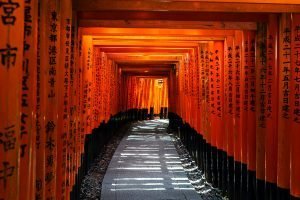
(4 Days/3 Nights)
Day 1
Train from Tokyo to Kyoto in morning Kiyomizu temple, Ninenzaka (old town) Gion walk
Day 2
Nijo Castle, Kinkakuji Temple, Ryoanji Temple, Nishiki Food Market
Day 3
Fushimi Inari Shrine, Bamboo Forest, Free afternoon. Farewell dinner
Day 4
Return to Tokyo for flight home
Includes: 3 nights in 3 star hotel in Kyoto, English speaking guide throughout, entrance fees, breakfast each day, all public transport and return to Tokyo on last day.
$2500 per person Twin Share
Season
Start of July through to the end of August
Includes
- Guide throughout
- Transfers via train and public bus
- All meals as outlined in the itinerary
- All accommodation including ryokan, mountain huts and hotels
- Luggage transfer from accommodation at the start of Day 2 and delivered to our ryokan on Day 5.
- Extensive First-aid kit
Excludes
- International Flights
- Travel Insurance
- Personal spending money
- Tips for Guides
- Any meals not listed as included
We get asked a lot of questions about our Omote Ginza Trail. The following are certainly the most common, however if you have another question please let us know or the answer may be found in our Trip Notes section.
How hard is the Omote Ginza Trail?
As always this is a difficult question to answer. Keep in mind that you will be trekking to above 3000 meters which always slows our pace. Trails are well marked and formed but there are several very steep sections that will get the heart pumping. Add to this the fact we will be staying in mountain huts which are communal affairs, and this trek can make some people feel a little out of their comfort level.
The bonus is the food is incredible, the people friendly and the landscapes are beautiful. You will be getting to see another side of Japan, that few others ever experience.
We suggest then that you get as fit as possible. If you are already pretty active, then step it up a little in the weeks leading into the trip. We have classified this trek as a High Heart Rate adventure.
What is the food like in Japan?
In a word, “delicious” and “fresh”. Ok, that was two words, but the food in Japan is fantastic with varied cuisine and a bowl of steamed rice is included in most typical Japanese meals. Okazu or side dishes are served with miso soup. Meals tend to lean toward fish and are often served with sake as a digestive.
Vegetarians and vegans can largely be catered for as tofu is a key staple in many meals. While hiking however it is not possible to accommodate a strict vegetarian or vegan diet due to the prevalence of fish sauce in miso soup, as well as it often being used as a base in other meals. As meals served here are set meals there is no option to request that it isn’t used. For all other dietary requirements, just let us know and we are sure to be able to cater for you.
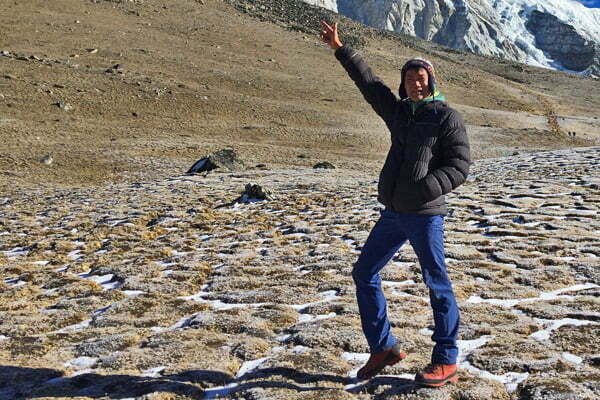
I love showing guests our mountains. So many people can’t believe Japan has such a beautiful mountain range like the Japanese Alps. They are not only wonderful to walk across but they are full of history and beautiful nature. Please come to Japan and see a side of Japan you could never imagine.
Tomo – Mountain Guide
We will be using three types of accommodation on this adventure: hotels, ryokan, and mountain huts. Each will be different from what you may have experienced back home so let’s have a look at them.
Hotels (boring)?
In Tokyo, we will be using the Hotel Sunroute Asakusa in Asakusa.
We hear what you’re saying, “Boring”. But it’s not the hotel that is exciting but the location.
Asakusa is a great place to visit in Tokyo! It is a vibrant and bustling neighbourhood that is home to some of the city’s most iconic landmarks, including Sensoji Temple and Tokyo Skytree. There are plenty of things to do in Asakusa, such as exploring the Nakamise Shopping Street, which dates back to 1716 and is one of Japan’s oldest shopping areas 2. You can also try some delicious local cuisine, such as Kibi Dango and Unagi. If you’re interested in Japanese culture, you can even dress up in a Kimono and take a stroll around the area.
Rooms are what you would expect, clean and small.
Whats Is A Ryokan?
Ryokan are Japanese style inns. They are an opportunity to experience traditional Japanese lifestyle and hospitality, incorporating elements such as tatami floors, futon beds, Japanese style baths and local cuisine. This makes them popular for local and international tourists and as such don’t be surprised if the ryokan we use is full of Japanese tourists.
The ryokan we use are generally small, family-run establishments with just a few rooms, however, there are some that resemble large hotels with hundreds of rooms. Ryokan range from no-frills, budget varieties to costly establishments catering to the very wealthy.
Robes and slippers are provided for and an Onsen or traditional Japanese bath is found onsite for washing up. There are different times for male and female bathing. Your guide will fill you in on the correct etiquette.
Mountain Huts
Mountain huts in Japan are similar to those found in Europe. Some are enormous with over 200 beds while others are quaint structures found off the beaten trail.
Sleeping arrangements are usually in dorm style. Toilets are all shared and lights out is usually at 9 pm.
Dinner and breakfast are served in the Mountain Huts, though it is a little more basic than what you will find in a ryokan.
All bedding is supplied by the Hut managers so there is no need to bring a sleeping bag along (yippee!)
